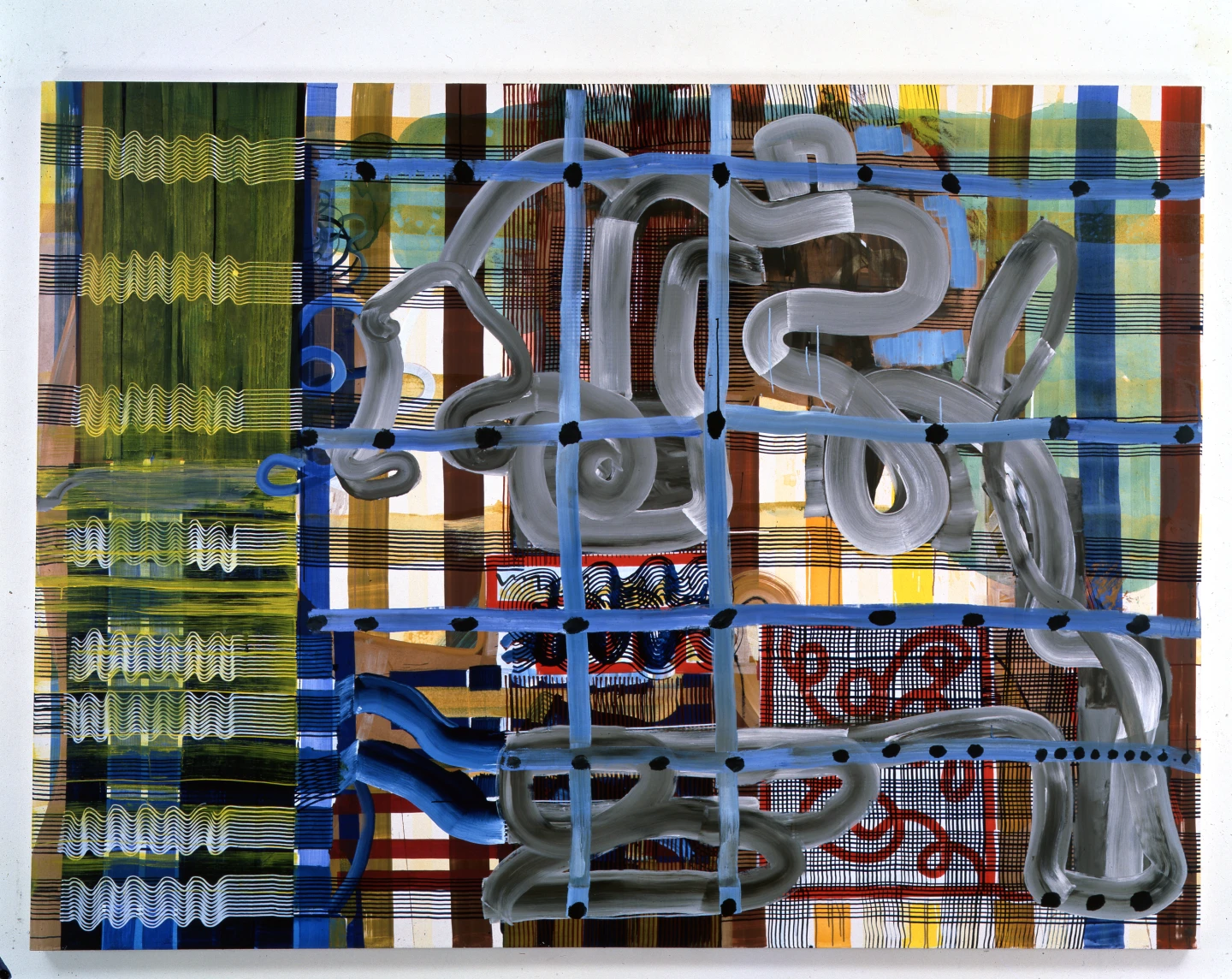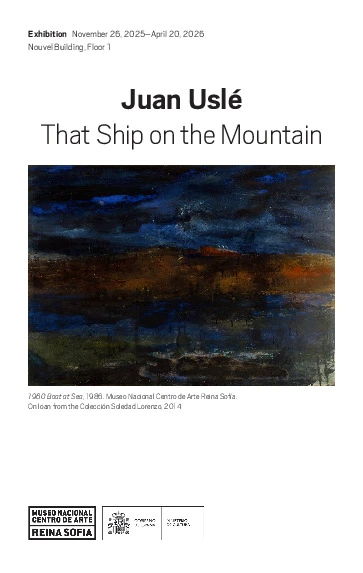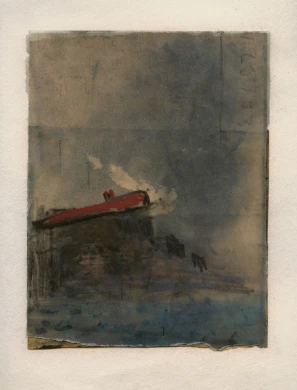
Juan Uslé; Manthis, 1998-1999. Colección Museo Helga de Alvear, Cáceres
© Juan Uslé, VEGAP, Madrid, 2025
That Ship on the Mountain is a major retrospective exhibition celebrating the more than forty-year career of Juan Uslé (Santander, 1954), one of Spain's most internationally renowned artists. This show comes twenty years after Open Rooms, Uslé's first solo exhibition at the Museo Reina Sofía.
Conceived of with the first-floor rooms of the Nouvel Building in mind, the exhibition explores the permeable and time-extended properties traditionally associated with the artist's groupings of works. The eleven rooms are arranged in the form of a non-chronological short story, a narrative constructed through comings and goings, prospection and retroaction, and a subtle nod to the connections his paintings make with other media. A case in point is Notes, or 'pictorial travel notes'; colour tests that have, for several years now, been grouped under the heading Notes on SQR (I dreamt you were developing), as well as his writings and photography. But regardless of form, these notes have become a recurring expression of Juan Uslé's artistic practice, a means by which he spends and records his day-to-day life: his travels, his leisure time, his studio work and his family life. Whatever their manifestation, the importance of the images and stories contained in Uslé's paintings lies not, therefore, in the influence they exert over one another, but in the subconscious links they make with the visible world and the possibilities for imagining other scenarios, whereby abstract language is linked to the representation of images that are either thought, imagined, seen or dreamed.
Uslé's career began in the late 1970s in his native Cantabria, with works in which dark tones and a visual calmness dominated. He studied at the School of Fine Arts in Valencia, becoming interested in abstract landscapes and photography. Upon returning to Santander, he produced pieces of an expressionist nature, presenting work at ARCO for the first time in 1984. After moving to New York in 1987, his painting began to explore more personal takes on abstraction: brighter palettes, gridded backgrounds, echoes of the forceful brushstrokes of late-period De Kooning. Uslé's painting gradually shifted towards a more lyrical and silent abstraction: devoid of stridency; expression reduced to rhythmic, if meandering, geometric lines that evoke the beat of a pulse. In contrast to his earlier works, the process is more mechanical and procedural. The canvas is saturated in paint right up to the edges in colours that are variations of a single tone; the paint suggests a kind of skin that covers everything, the canvas a timeless threshold leading to a place of infinite possibilities, including areas of darkness and flashes of light.
Juan Uslé
That Ship on the Mountain
Artists
(Santander, 1954) is one of Spain’s foremost contemporary painters internationally. He has lived between New York and Saro (Cantabria) since 1987.
Uslé has participated at major events such as the Venice Biennale (2005), Documenta 9 (1992), the Istanbul Biennial (1992) and the São Paulo Biennial (1985). He has held solo shows at Bombas Gens Centre d’Art de Valencia (2021); Kunstmuseum Bonn (2014); the Centro Galego de Arte Contemporánea in Santiago de Compostela (2013); Stedelijk Museum voor Actuele Kunst (SMAK) in Gent (2004); the Irish Museum of Modern Art (IMMA) in Dublin (2004); the Fundación Botín in Santander (2004); the Museo Reina Sofía in Madrid (2003); the Museu d’Art Contemporani de Barcelona (MACBA) (1996); and the Institut Valencià d’Art Modern (IVAM) in Valencia (1996), among others.
His work is part of numerous international public and private collections, for instance: The Museum of Modern Art (MoMA), New York; the Museum of Fine Arts, Houston; the Museum of Fine Arts, Boston; the Irish Museum of Modern Art (IMMA), Dublin; the Museu d’Art Contemporani de Barcelona (MACBA); the Musée National d’Art Moderne, Centre Pompidou, Paris; the Musée d’Art Contemporain du Luxembourg; the Museo Guggenheim, Bilbao; the Museo Reina Sofía, Madrid; the Museu Serralves, Porto; the Stedelijk Museum voor Actuele Kunst (SMAK), Gent; and Tate Modern, London.
In 2002, his work and career were honoured with the National Prize for Plastic Arts, awarded by Spain’s Ministry of Culture.
Curated by
Ángel Calvo Ulloa
Organised by
Museo Reina Sofía
Additional material
 Download PDF
Download PDFExhibition information sheet: Juan Uslé. That Ship on the Mountain

